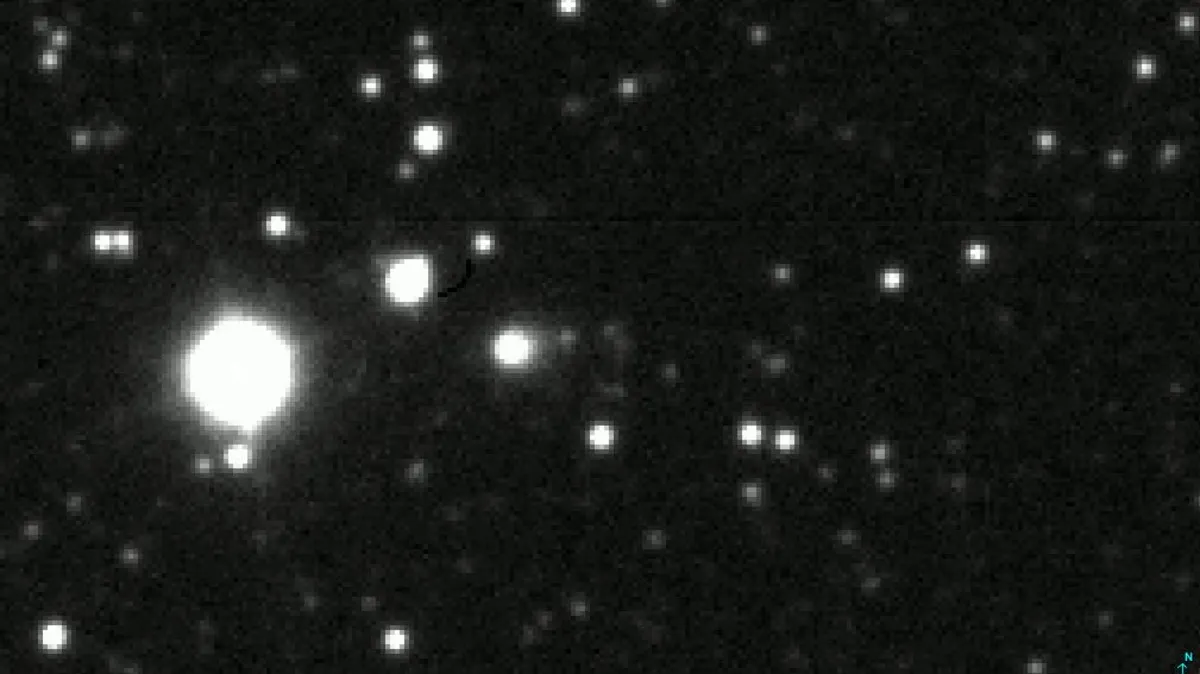
The mysterious interstellar visitor, known as 3I/ATLAS, has recently captured the attention of astronomers as it speeds through our solar system. New research suggests that this enigmatic comet may be around 3 billion years older than our cosmic neighborhood. If this finding is confirmed, 3I/ATLAS would be recognized as the oldest comet ever observed from Earth. Moreover, as it approaches the sun, it may develop an impressive tail, adding to its already fascinating profile.
3I/ATLAS, an interstellar comet, is estimated to measure up to 15 miles (24 kilometers) across and is currently hurtling towards the sun at a staggering speed of over 130,000 mph (210,000 km/h). The comet is expected to reach its closest point to the sun, known as perihelion, in late October, after which it will embark on a long journey back out of the solar system, ultimately disappearing from our view forever.
The comet was first discovered on July 1, and NASA confirmed it as an interstellar object within 24 hours. Since then, the astronomical community has been racing to gather insights about this alien interloper.
In a groundbreaking study uploaded to the preprint server arXiv on July 7 and presented on July 11 at the Royal Astronomical Society's National Astronomy Meeting in Durham, England, researchers utilized a computer model to simulate the potential origins of 3I/ATLAS. The findings indicate that the comet likely hails from the Milky Way's thick disk—an area populated by stars that are believed to be billions of years older than our solar system. This suggests that 3I/ATLAS could be just as ancient as its stellar neighbors.
Matthew Hopkins, a doctoral candidate at the University of Oxford and lead author of the study, stated, "Our statistical method suggests that 3I/ATLAS is very likely to be the oldest comet we have ever seen." However, it is important to note that these findings have not undergone peer review, and additional observations are necessary to ascertain the comet's exact age.
The research team employed a novel computer program known as the Ōtautahi-Oxford model to predict the origins of interstellar objects (ISOs) using data from the European Space Agency's Gaia space observatory. Hopkins developed this model as part of his PhD research, and interestingly, he had just completed his doctoral thesis on the topic shortly before the discovery of 3I/ATLAS. "It's a fantastic opportunity to test our model on something brand new and possibly ancient," he remarked.
To date, only two other interstellar objects have been documented: 1I/'Oumuamua, an asteroid discovered in 2017, and 2I/Borisov, a comet identified in 2019. Both of these objects entered the solar system in a trajectory aligned with the sun’s path through the Milky Way, suggesting they originated from the galaxy's main disk. In contrast, 3I/ATLAS approaches us from a side angle, indicating it comes from a previously unobserved region of the galaxy.
Chris Lintott, a co-author of the study and astronomer at the University of Oxford, noted, "We think there's a two-thirds chance this comet is older than the solar system, and that it's been drifting through interstellar space ever since." As more data about 3I/ATLAS is collected, the research team aims to refine their models to better pinpoint its origins.
Understanding the origins of 3I/ATLAS is crucial for predicting its behavior as it approaches the sun. Researchers speculate that the planetary systems within the thick disk may contain abundant water, which could mean that 3I/ATLAS is rich in water ice. If this hypothesis holds true, the comet could develop a significant cometary tail in the coming months as the sun heats and vaporizes its outer layers.
As the comet approaches, the cloud of ice, dust, and gas surrounding it—known as the coma—may expand significantly. This increase in size would allow the coma to reflect more sunlight, making 3I/ATLAS appear much brighter and more visually stunning as it nears Earth.
The ongoing study of 3I/ATLAS not only has the potential to redefine our understanding of comets but also opens up new avenues for exploring the interstellar origins of celestial bodies. As researchers continue to gather and analyze data, the astronomical community eagerly anticipates witnessing the magnificent display that this ancient interstellar visitor may present in the coming months.